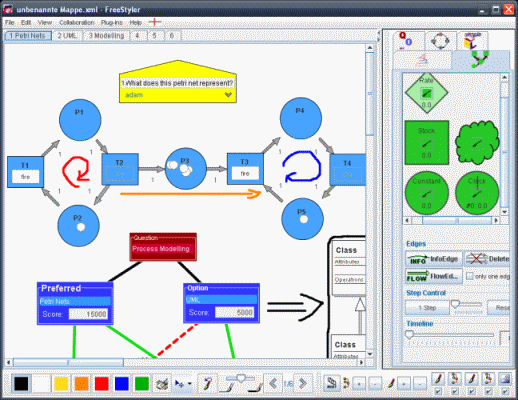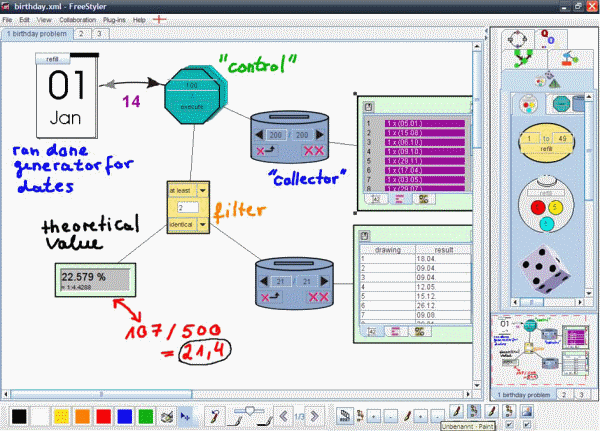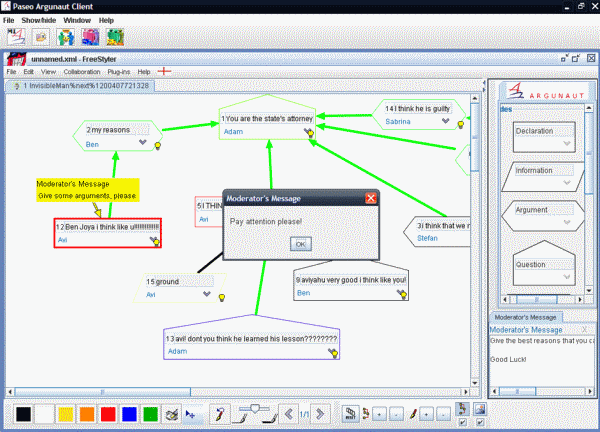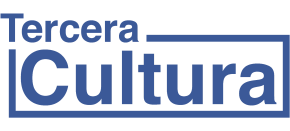En Tercera Cultura nos encantan all things geek, y cachureando por aquí y por allá, encontramos un software libre de lo mas mono. Les presentamos el FreeStyler
 Desarrollado por investigadores de la Facultad de Ingeniería de la Universidad de Duisburg-Essen en Alemania, es “…una herramienta de modelamiento cooperativa e interactiva que combina diferentes lenguajes gráficos usados para estructurar contenidos, y que permite ingresar escritura a mano. Provee una serie de formas predefinidas para representar distintos tipos de input, los que permiten distinguir los varios elementos en la elaboración y el análisis de un asunto. Los plug-ins permiten extender e intercambiar paletas (de elementos)”.
Desarrollado por investigadores de la Facultad de Ingeniería de la Universidad de Duisburg-Essen en Alemania, es “…una herramienta de modelamiento cooperativa e interactiva que combina diferentes lenguajes gráficos usados para estructurar contenidos, y que permite ingresar escritura a mano. Provee una serie de formas predefinidas para representar distintos tipos de input, los que permiten distinguir los varios elementos en la elaboración y el análisis de un asunto. Los plug-ins permiten extender e intercambiar paletas (de elementos)”.
 En resumen es un software para modelar sistemas de todo tipo: físicos, químicos, formales, argumentativos, circuitos, autómatas simples, y un larguísimo etc! Llegamos a este programa buscando algun software para representar estructuras argumentativas, pero esta plataforma es tan amplia y permite hacer tantas cosas, que es de extrañar que no sea mas conocida, sobretodo porque es gratuita. Miren la lista de plugins disponibles:
En resumen es un software para modelar sistemas de todo tipo: físicos, químicos, formales, argumentativos, circuitos, autómatas simples, y un larguísimo etc! Llegamos a este programa buscando algun software para representar estructuras argumentativas, pero esta plataforma es tan amplia y permite hacer tantas cosas, que es de extrañar que no sea mas conocida, sobretodo porque es gratuita. Miren la lista de plugins disponibles:
- Activity – a UML activity diagram modeling tool
- Argunaut – a plugin emulating the Digalo discussion environment
- Chat – a small chat client which can be used to chat with other participants in the same collaboration session.
- Discuss – a discussion and moderation support plugin.
- FeedbackLoops – model your feedback loops with FreeStyler.
- Finite Automata – model and test finite automata with this plugin
- Functions – Let FreeStyler draw your function graphs with this plugin
- Graphical Calculator for Products and Sums – s. above. These latter two plugins can be used in conjunction with the Moon Plugin
- MindMapping – This plugin can be used to create simple MindMaps.
- Moon – While this plugin was initially used to measure moon craters (together with the calculation plugins) it can easily be used to measure arbitrary lengths on pictures of your choice.
- Petri Nets – This plugin can be used to model simple place transition networks.
- Picture Collections – This plugin creates a node from every picture you put into a specified folder.
- QOC – document your decision with the QOC approach. Alternatively you can use this plugin as a score boarding model.
- SeeMe – the SeeMe-modeling language has inspired this plugin. Model your socio technical systems using this plugin.
- Simple UML / UML – model simple class diagramms
- Stochastic Experiments (CoSE – Collaborative Stochastic Experimenting) – model, simulate and analyse probability experiments of varying complexity
- Stochastic Introduction – model, simulate and analyse elementary probability experiments. This plug-in is an extract of Stochastics Experiments (CoSE) for younger students
- System Dynamics – model complex systems with System dynamics within the FreeStyler
 Lo único que se necesita es tiempo e interés. Si eres profesor de ciencias, puede ser una gran herramienta educativa, porque permite armar los modelos o simulaciones colaborativamente (en línea!). Recién lo bajé y voy a estar jugueteando con el software para ver que se puede hacer con el. Si le interesa, se lo baja y le gusta, comente aquí… de repente en una de esas armamos un grupo de trabajo en torno al asunto ^_^. Revise el manual introductorio aqui, y bájese el programa acá:
Lo único que se necesita es tiempo e interés. Si eres profesor de ciencias, puede ser una gran herramienta educativa, porque permite armar los modelos o simulaciones colaborativamente (en línea!). Recién lo bajé y voy a estar jugueteando con el software para ver que se puede hacer con el. Si le interesa, se lo baja y le gusta, comente aquí… de repente en una de esas armamos un grupo de trabajo en torno al asunto ^_^. Revise el manual introductorio aqui, y bájese el programa acá:
http://www.collide.info/node/179





